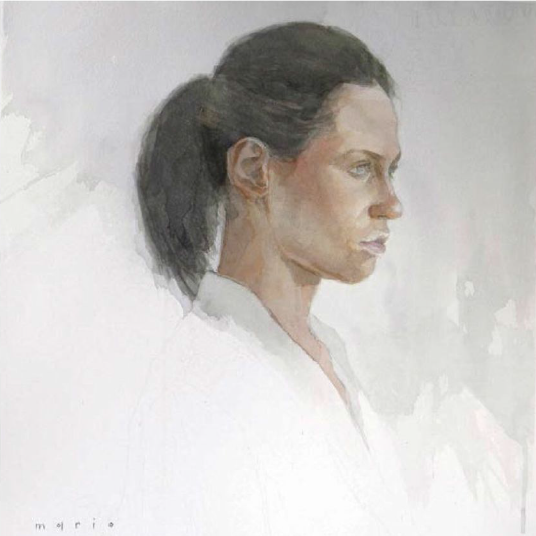Working on a small painting is similar to producing a short film, as opposed to creating a larger painting, which is more like releasing a big-budget movie. The areas of coverage are smaller, thus increasing the margin for error. I consider my small watercolor figure paintings a step up from a sketch and a step down from a highly finished larger work. It’s important for me to keep the small works in perspective, in order to avoid the temptation to overwork them in an attempt to implement unneeded details. The smaller brushstrokes require discipline, which assists me when I’m working in confined areas in larger paintings. Leaving the background white, as I’ve done with Diana, gives the illusion of space, as opposed to adding a dark background, which would have closed the composition and made it appear smaller.

The practice of sketching is a leisurely activity that should be enjoyed. It can be a bonding experience with fellow artists or a solitary experience, working in a journal. Either way, you should not feel the need to complete the sketch or come away with a masterpiece. There is freedom in making mistakes and attempting a new technique you wouldn’t attempt in your serious work.

Sketching allows me to push boundaries and introduce working methods I would like to implement in my finished works. In Diana, I challenged myself to work the entire painting using burnt umber and French ultramarine with only one finishing glaze of fresh tone. The result is the appearance of more light in the highlighted areas of the model’s face.

My watercolor sketches such as Anya rely upon loose applications of color, and I allow the white of the paper to show through more than I would in my highly rendered works. Sometimes, however, I start with a light wash over the entire sheet of paper, as I did with Sophie, It all depends upon the manner in which I decide to build up the tones in a sketch. I enjoy having the ability to begin a painting in an unorthodox manner and the option to stop working on it whenever I choose. Creating a visual diary relieves the pressure of presenting your efforts to the public. In essence, it’s an investment into your maturation as an artist.
Watch Mario Robinson demonstrate his process in this Liliedahl art workshop video “Portrait Painting Techniques That Tell a Story.”
Excerpted from Lessons in Realistic Watercolor. A Contemporary Approach to Painting People and Places in the Classical Tradition, by Mario Andres Robinson (Monacelli Studio, New York, NY, 2016). Copyright ©2016 Mario Andres Robinson. All rights reserved. Excerpted with permission from Monacelli Press (www.monacellipress.com) in the June-July 2016 issue of PleinAir Magazine.







